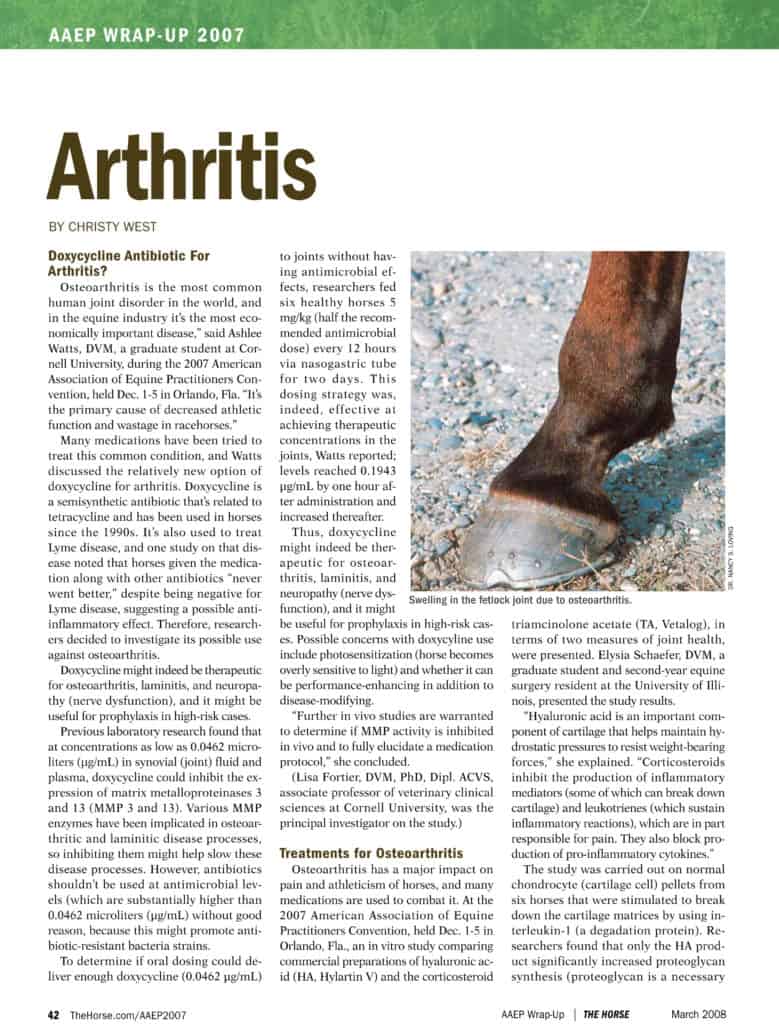Firocoxib Dose for Navicular Pain and Osteoarthritis Established
When it comes to pain management in horses, the words “osteoarthritis” and “phenylbutazone” seem to work in tandem. But not all veterinarians are sold on the routine use of this drug in horses. Phenylbutazone is a non-steroidal anti-inflammatory

















